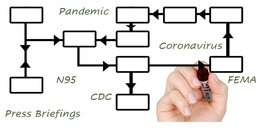Opportunity Wasted: The Obama Administration's Failure to Adopt Needed Regulatory Safeguards in a Timely Way is Costing Lives and Money

In April 2011, CPR issued a white paper in which a group of Member Scholars and Policy Analysts identified 12 key health, safety, and environmental regulatory actions slowly working their way through the Obama Administration’s regulatory pipeline. In the white paper, Twelve Crucial Health, Safety, and Environmental Regulations: Will the Obama Administration Finish in Time?, the authors warned that the Administration’s failure to adopt a sense of urgency with respect to completing its work had opened the door to the very real prospect that nine of the twelve regulatory actions might get caught up in the backwash of the 2012 presidential campaign, and indeed might never be completed by the current Administration. In this report, CPR follows up to see how the Administration has done.
Deconstructing Regulatory Science

Writing for The Regulatory Review, Rena Steinzor and Wendy Wagner observe that "The U.S. Environmental Protection Agency (EPA) Administrator Scott Pruitt recently opened another front in his battle to redirect the agency away from its mission to protect human health and the environment. This time, he cobbled together a proposed rule that would drastically change how science is considered during the regulatory process."
Attention, Lawmakers -- Regulation Is More Popular Than You Think

Amid the Sturm und Drang (storm and stress) of politics these days, one fact stands out — a large majority of Americans want more regulatory protection in a wide variety of areas, according to a recent poll of likely voters. The results are consistent with previous polls that indicate that Americans understand the importance of government regulation in protecting them from financial and health risks beyond their control. They also indicate majority support for efforts by the Biden administration to renew government regulation — as well as a stark repudiation of former President Trump’s extreme anti-regulatory agenda.
Enron's Collapse 20 Years Later -- Lessons Not Learned

In December 2001, the wunderkind energy company Enron collapsed spectacularly, destroying $67 billion in assets held by mutual funds, retirees and individual stock investors. Some commentary 20 years later has focused on how Enron heralded the first of companies making money by “disruption"—even as some of this disruption also led to negative impacts on society. There is no doubt that, like Facebook, even Enron’s legitimate money-making enterprises had some negative spillovers as a side effect of wealth creation by innovation. But the problem isn’t with the idea of seeking innovation or testing disruptive ways of doing things; the problem is that government regulators, then and now, have been starved of their ability to effectively channel market forces and private innovation to wealth creation while avoiding negative externalities. Truly supporting the private sector, innovation, and wealth creation, requires more government regulation, not less.
















